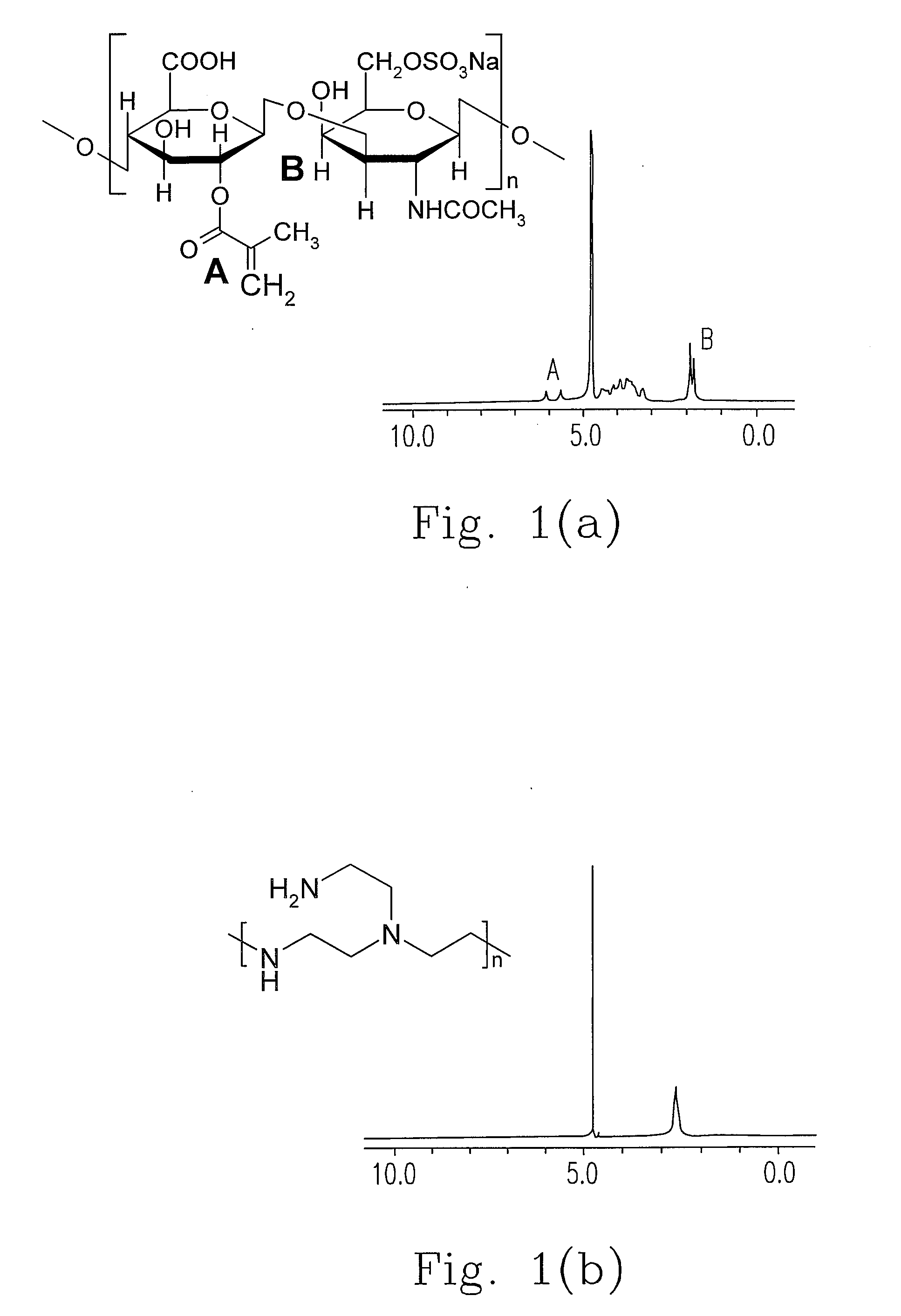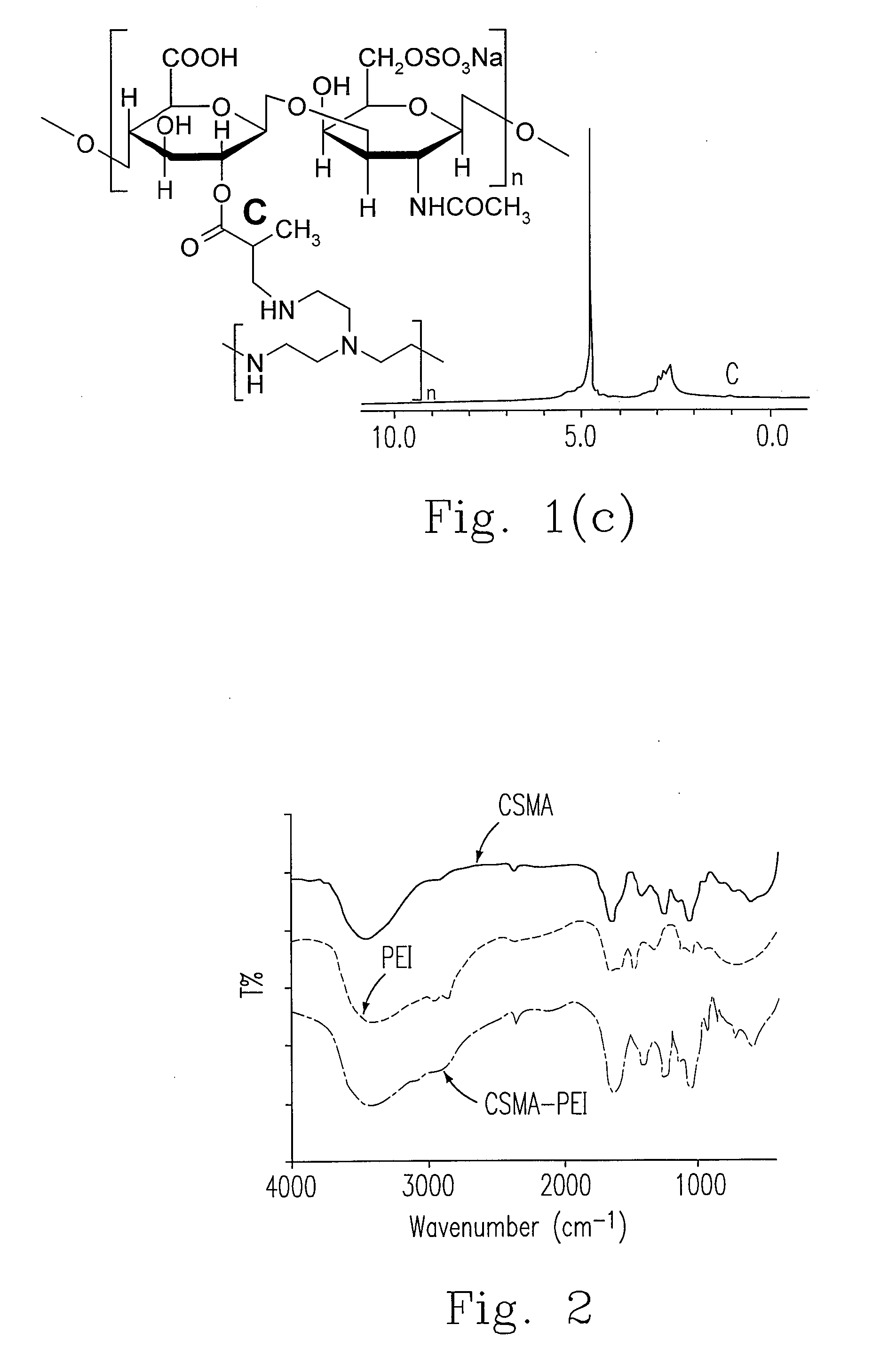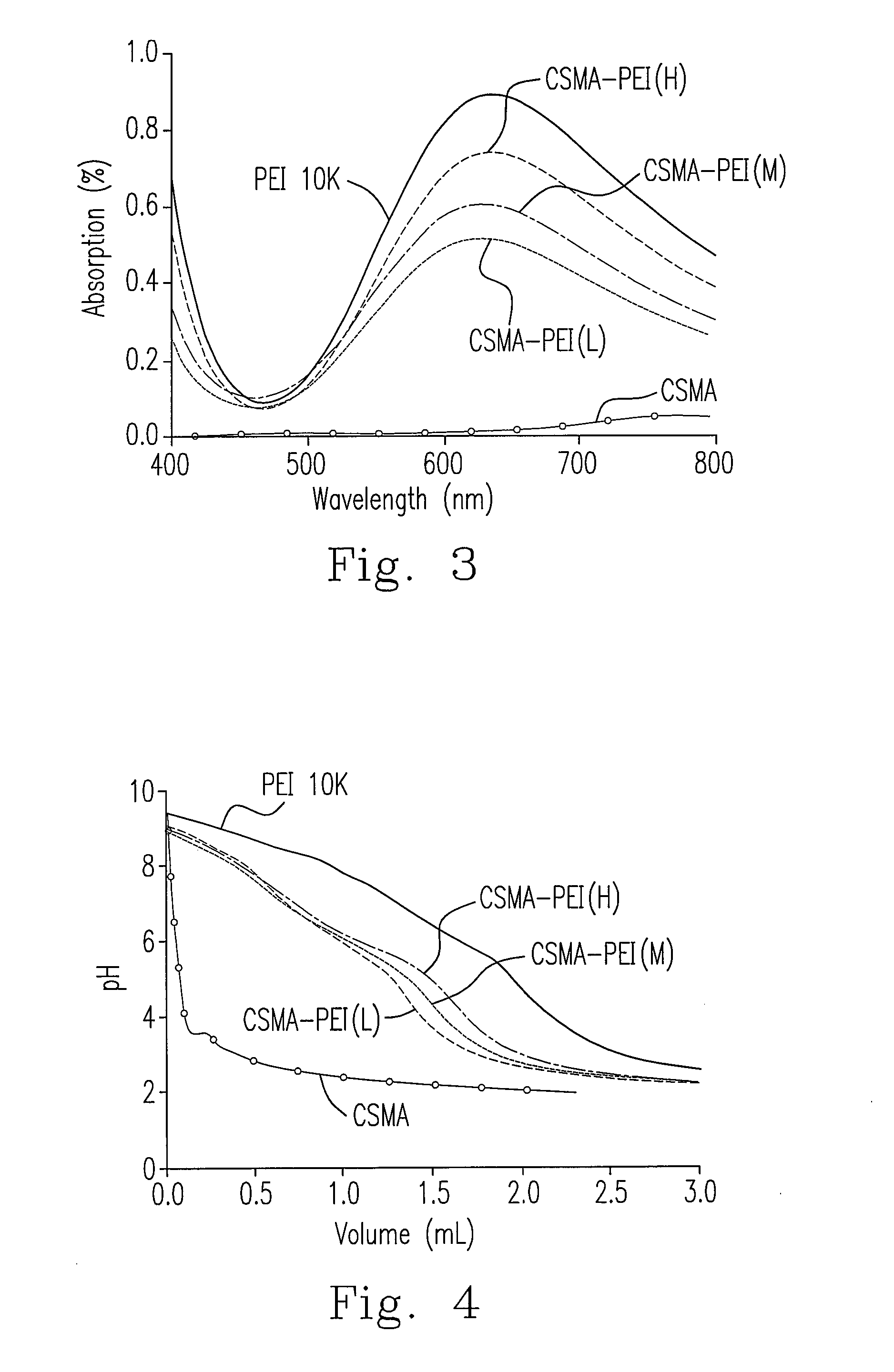Polysaccharide-grafted polyethylenimine as a gene carrier
a polyethylenimine and polysaccharide technology, applied in the field of gene carriers, can solve the problems of high toxicity of pei and patent publication, and achieve the effects of low toxicity, high water-soluble gene carriers, and high capability nano-leveled gene carriers
- Summary
- Abstract
- Description
- Claims
- Application Information
AI Technical Summary
Benefits of technology
Problems solved by technology
Method used
Image
Examples
Embodiment Construction
[0026]The present invention will now be described more specifically with reference to the following Embodiments. It is to be noted that the following descriptions of preferred Embodiments of this invention are presented herein for purpose of illustration and description only; it is not intended to be exhaustive or to be limited to the precise form disclosed.
[0027]The gene carrier sought protected in the invention includes two parts, one is macromolecule such as hydrocarbon molecule (e.g. saccharide, polysaccharide and others), and the other is positive charge molecule. The amino group of the positive charge molecule forms a covalent bonding with the double-bonded group of hydrocarbon. The generated “hydrocarbon-positive charge molecule” is able to be the gene carrier, and further transfects genetic material such as DNA, RNA, complementary DNA (cDNA), microRNA, small interference RNA (siRNA) and so on into cells or tissues, so that the therapeutic or cytotoxic effect is achieved. Add...
PUM
| Property | Measurement | Unit |
|---|---|---|
| Size | aaaaa | aaaaa |
| Size | aaaaa | aaaaa |
| Size | aaaaa | aaaaa |
Abstract
Description
Claims
Application Information
 Login to View More
Login to View More - R&D
- Intellectual Property
- Life Sciences
- Materials
- Tech Scout
- Unparalleled Data Quality
- Higher Quality Content
- 60% Fewer Hallucinations
Browse by: Latest US Patents, China's latest patents, Technical Efficacy Thesaurus, Application Domain, Technology Topic, Popular Technical Reports.
© 2025 PatSnap. All rights reserved.Legal|Privacy policy|Modern Slavery Act Transparency Statement|Sitemap|About US| Contact US: help@patsnap.com



